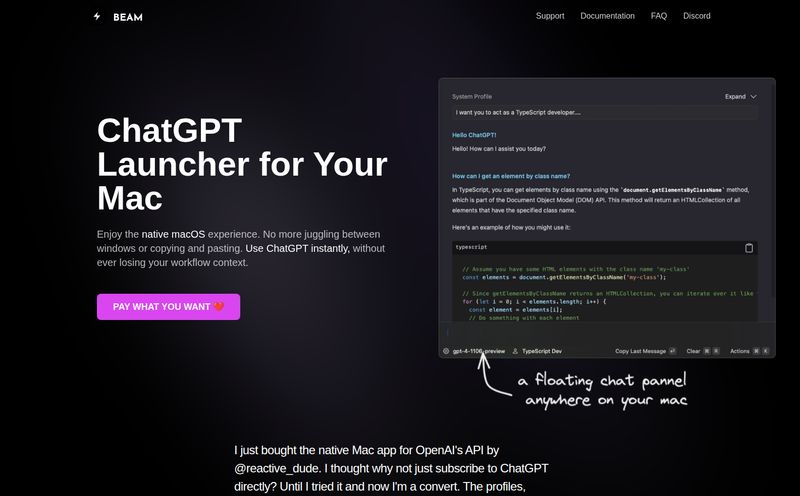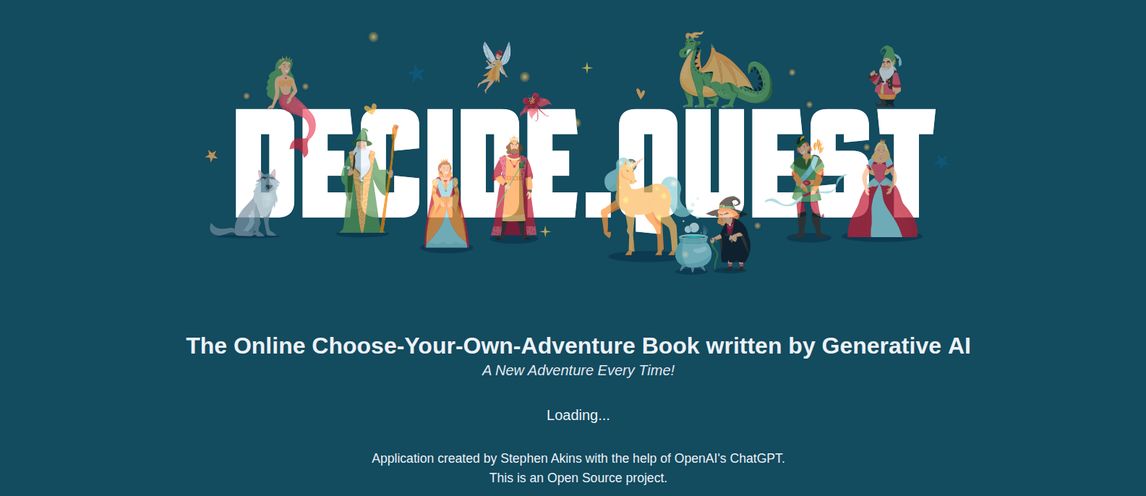I’ve been in the SEO and tech game for a while now. Long enough to remember when “optimizing” meant jamming keywords into the meta tags and hoping for the best. Things have changed, to say the least. Now, we’re all talking about AI, large language models, and the magical world of vectors. And with every new wave of tech comes a new set of tools, each with its own steep learning curve and proprietary language. It can be exhausting.
Honestly, if I have to learn one more oddly-specific query syntax for a new-fangled database, I might just pack it all in and open a coffee shop. That's why when I stumbled upon MyScale, I was… intrigued. Skeptical, but intrigued. A vector database that speaks SQL? The same SQL that’s been the bedrock of data for decades? It sounded too good to be true.
So, What on Earth is MyScale?
Let's break it down without the corporate jargon. At its core, MyScale is an AI database built for today's demanding applications, especially those using Generative AI. It handles vector search—the technology that allows AI to understand relationships and context in data, like finding images of “happy dogs” not just files named “happy_dog.jpg”.
But here’s the kicker, and the reason I’m writing this. It fuses this cutting-edge vector capability with the power and familiarity of SQL. Think of it like this: You have a brand new, high-performance electric race car, but instead of a confusing cockpit full of bizarre new controls, it has the exact steering wheel, pedals, and gearshift of the trusty Toyota you’ve been driving for 15 years. You get all the new power without the frustrating learning period. That’s MyScale. It’s a fully-managed cloud database that lets you build incredibly sophisticated AI apps using commands like SELECT, FROM, and WHERE. No pilot's license required.

Visit MyScale
The Magic Trick: Marrying SQL with Vector Search
For years, the worlds of relational data (think neat rows and columns in a spreadsheet) and vector data (think messy, high-dimensional clouds of meaning) have been separate. You needed one set of tools for your business analytics and a completely different, often more complex, set of tools for your AI features.
MyScale just crashes those two parties together. And it’s a game-changer. Suddenly, your backend developers who live and breathe SQL can work directly with the vector embeddings your data scientists are creating. Your data analysts can run complex filtered searches that combine traditional metadata—like product price, date, or user ID—with semantic, vector-based queries. Imagine running a query like:
Find all user reviews from the last 90 days, for products under $50, that express a frustrated sentiment.
That kind of query, which combines structured data (date, price) with unstructured, semantic data (frustrated sentiment), is ridiculously powerful. And doing it with a familiar SQL structure just lowers the barrier to entry so, so much.
Key Features That Actually Matter
Every platform lists a dozen features, but here are the ones that genuinely stood out to me from a practitioner's perspective.
More Than Just Vectors: Powerful Full-Text Search
Vector search is amazing for understanding context, but sometimes you just need good old-fashioned keyword search. MyScale includes robust full-text search capabilities (using the well-regarded BM25 algorithm). This hybrid approach is the sweet spot. It means you get the best of both worlds: the nuanced understanding of vector search and the precise recall of keyword search. It's a much more thorough way to retrieve information.
Built for the Modern AI Stack
A tool is only as good as its integrations. MyScale knows this. They have seamless integrations with the tools developers are actually using to build AI apps today. We're talking about direct support for frameworks like LangChain and LlamaIndex, which are the bread and butter of modern GenAI development. This isn’t some isolated system; its designed to plug right into the ecosystem.
Performance without a Hefty Price Tag
Performance and cost are always the two elephants in the room. MyScale uses a proprietary algorithm they call MSTG (Multi-Scale Tree Graph) for their vector engine. The claim is high performance and excellent resource optimization, leading to lower costs. From what I can see in their own performance benchmarks and the structure of their pricing, they seem to be delivering on that promise. It feels cost-effective, especially for production-level apps.
Let's Talk About RAG (Because Everyone Is)
If you're in the AI space, you can't escape the term RAG, or Retrieval-Augmented Generation. It's the technique that makes chatbots and AI assistants so much smarter by letting them look up relevant information before answering a question. The quality of the AI's answer is almost entirely dependent on the quality of the information it 'retrieves'.
This is where MyScale shines. Because you can use SQL to create highly specific, filtered queries, you can provide the AI with much better, more relevant context. You're not just throwing a bunch of documents at it; you're retrieving precisely the right snippets of information. Better retrieval means better AI-generated responses, less 'hallucination', and a more reliable application overall.
MyScale Pricing: What's It Going to Cost You?
Alright, the all-important question. The pricing model is refreshingly straightforward, which I appreciate. No need to hire a consultant to decipher it.
| Plan | Best For | Price | Key Feature |
|---|---|---|---|
| Free | Development & Prototyping | $0 / month | Supports ~5 million vectors |
| Standard | Production Applications | Starts from $68 / month | Pay-as-you-go, scalable resources |
| Enterprise | Large-Scale Deployments | Contact for quote | Premium support, custom SLAs |
The Free tier is incredibly generous. Being able to support up to 5 million vectors is more than enough for any developer to build a full-featured prototype or even run a small-scale application. The Standard tier seems very reasonably priced for growing businesses that need to move into production. It gives you the flexibility to scale without a massive upfront commitment. And the Enterprise plan is, well, enterprise—you get all the bells, whistles, and dedicated support you'd expect.
Who Is MyScale Actually For?
I see a few clear winners here:
- Development Teams with Strong SQL Skills: This is a home run. You can leverage your team's existing expertise to build next-gen AI features without a painful retraining process.
- Startups Building GenAI MVPs: The free tier is your best friend. It lets you get a powerful product to market fast and without initial infrastructure costs.
- Established Companies: Perfect for businesses looking to integrate AI into existing systems. You can connect it to your current data stack and workflows far more easily than a non-SQL alternative.
Some might argue that if you're a pure Python data scientist, you might prefer a Python-native client. And that's fair. But the ability for the entire team—from analysts to backend engineers—to access and query the same AI data using a universal language like SQL is an organizational advantage that's hard to ignore.
My Final Thoughts: Is MyScale Worth a Shot?
Yes. Absolutely. In a market flooded with complex, niche tools, MyScale’s approach feels like a breath of fresh air. It's practical, powerful, and accessible. By embracing SQL, they haven’t dumbed down vector search; they’ve democratized it.
I started this article by complaining about learning new languages. MyScale feels like a solution to that problem. It’s a tool that respects the skills many of us have spent our careers building and gives us a bridge to the future of AI. For any team looking to build production-grade GenAI applications without starting from scratch, MyScale should be at the top of your list to check out. It's a seriously impressive peice of tech.
Frequently Asked Questions about MyScale
- What is the difference between MyScale and a specialized vector database?
- The main difference is SQL. While specialized vector databases focus purely on vector operations (often with their own query language), MyScale integrates vector search directly into a SQL-compatible database. This allows you to run hybrid queries that combine vector search with traditional structured data filtering in a single, familiar interface.
- Is MyScale just for RAG applications?
- No, while it's excellent for RAG, its capabilities are much broader. It's suitable for any application that needs to search and analyze large volumes of complex, unstructured data. This includes things like recommendation engines, semantic search systems, image or audio similarity search, and fraud detection.
- How hard is it to migrate to MyScale?
- If your team is already comfortable with SQL, the transition should be relatively smooth. The database operations will feel familiar. The main new concept to grasp will be how to structure your vector search queries within the SQL syntax, but MyScale provides solid documentation for this.
- Can I really use standard SQL for everything?
- For the most part, yes. You use standard SQL for data definition (CREATE TABLE), manipulation (INSERT, UPDATE), and querying (SELECT). The vector search functionality is introduced via specific functions, like `distance()`, that you use within your standard SQL queries. So you're not learning a new language, just a few new functions.
- What is the MSTG algorithm they mention?
- MSTG stands for Multi-Scale Tree Graph. It's MyScale's proprietary algorithm for indexing and searching vectors. They've designed it to be highly efficient in terms of speed, memory usage, and cost, which is a key part of their value proposition for running AI apps at scale without breaking the bank.



